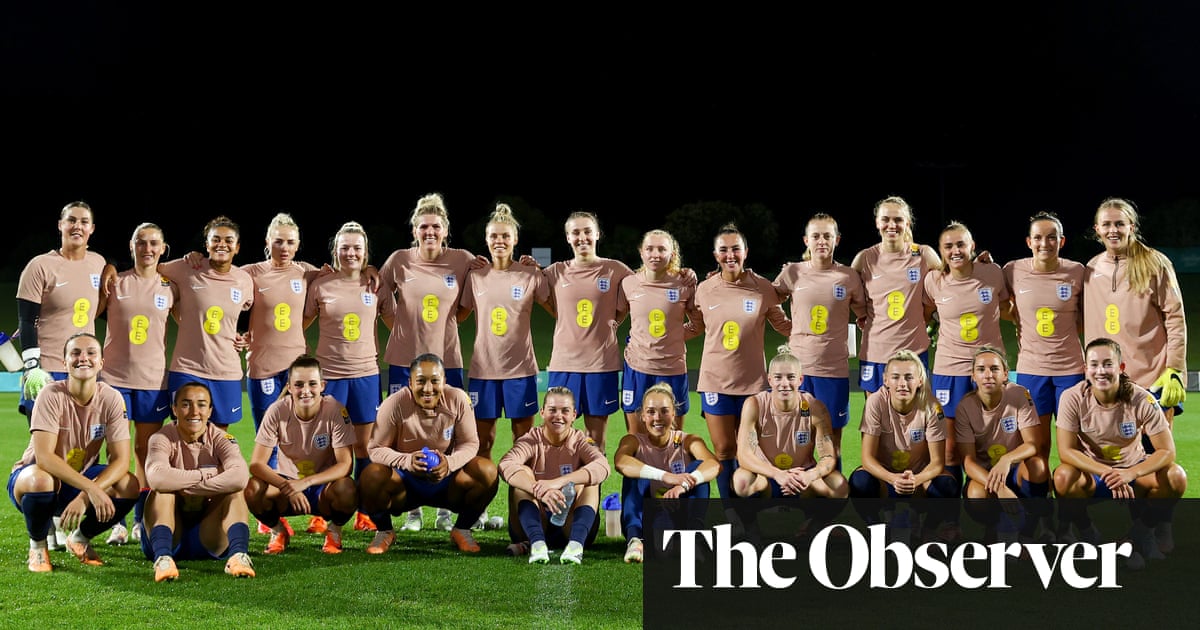
Midway up the stands inside Wembley, the signage flashes with “European v world champions”. The buildup to England’s showdown with the USA has been overshadowed, rightly, by the weight of the findings of the Sally Yates report into abuses in women’s football in the States and the burden of it on the US players, but the narrative of the match itself is hugely exciting.
The USA have been the world leaders in women’s football for a long time. The gap to the rest has been vast, but it is closing. Megan Rapinoe went as far as to say on Thursday that she feels “there isn’t really a huge gap any more and there hasn’t been for a long time”.
Why, though, has a gap existed for so long despite continued and increasing investment in England?
There are a number of reasons why the US have led the way. Most significant was the introduction of Title IX, part of the education amendments to the Civil Rights Act in 1972. Title IX decreed that government-funded institutions could not discriminate on the basis of sex. It meant educational institutions had to rebalance their funding of sports programmes: to continue large backing for key men’s sports such as American football and basketball meant putting the same amount into women’s sports.
That has created a player pool that is the envy of the world, with scholarships allowing players from the US, and across the globe, to receive a high-quality education and play incredibly competitive football. With that has come a culture of competitiveness and expectation – which contrasts greatly with the gratitude culture that has existed in England. In the US, women have a right to play football and for it to be properly funded, and they expect it to be.
The US women’s national team, and the various professional leagues that have been formed over the years, have been built on top of this base of talent and support – although as recent investigations show, the system is very far from perfect.
Women’s football in the US also benefits from not being hidden in the shadows of the men’s game. Football is not the number one sport for men, and that has given the women’s game space to flourish.
Seven players in this England camp and the manager, Sarina Wiegman, have played in the US and experienced what makes it so different.
“I was there for one year, a long time ago, as I’m really old,” said Wiegman, with a characteristically wry smile. “It was life-changing. We had a really top sports environment with lots of great facilities. I really enjoyed it. That winning mentality really came across. I was 19 at the time. I thought: when I go back to the Netherlands I hope there comes a time that we have the same facilities and environment there, as I really loved it. It influenced me in my development as a person.”
Lucy Bronze, who, like Wiegman, played under the renowned University of North Carolina coach Anson Dorrance, said: “I think it had probably one of the biggest influences at an important time in my career. When I was younger, in Europe, in general, women’s football wasn’t really a huge spectacle. Whereas in America, everything was amazing. Going out there and playing at college for a year was a dream come true and made me realise that’s really what I wanted to do.
“Playing with the players there who went on to be so successful at such a young age, at 17, it had a huge influence on me as a player and a person. Their mentality – learning that at 17 years old – I think that’s what has helped me grow my mentality in an England environment.”
There, Bronze came up against a young Tobin Heath. “Tobin had broken into the US team and was the first player that I really played with who was that world-class standard and I got to go head-to-head, literally head-to-head, with her in training sessions,” Bronze said. “I realised that I need to work a lot harder and push myself if I want to compete against those kinds of players.”
Women’s teams in Europe and across the world, domestic and international, have had to try to find a way to build a base that rivals the US system that allows players to flourish and creates such a huge pool that the best can be skimmed off the top.
The Football Association’s Gameplan for Growth in 2017 started to look at the game in England in this way, with ambitions to build the base as much as it built and invested in the top of the sport. The investment has come and work has been done in growing all areas, from grassroots and school football to the England pathway and the fanbase.
The Lionesses’ success at the Euros in the summer sits on the shoulders of this work. Now, England have depth to rival the US in a way that had not been there before and players are able to play in professional environments from an early age.
The gap isn’t closed. Until the US are toppled by England at a World Cup it cannot be said to have closed. Even then, establishing a player pool as deep as the college system provides in the US is still a long way off.












